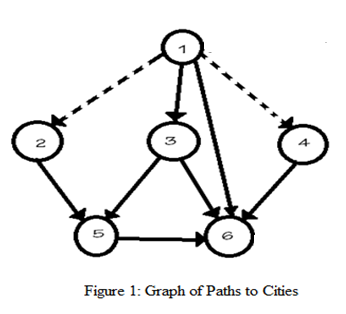In order to control traffic, a network router, A periodically sends a message to its neighbor, B, telling it to increase or decrease the number of packets that it can handle. At some point in time, Router A is flooded with traffic and sends B a message telling it to cease sending traffic. It does this by specifying that the number of bytes B may send (A’s window size) is 0. As traffic surges decrease, A sends a new message, telling B to restart transmission. It does this by increasing the window size from 0 to a positive number. That message is lost. As described, neither side will ever transmit. State and explain this type of deadlock.
In order to control traffic, a network router, A periodically sends a message to its neighbor, B, telling it to increase or decrease the number of packets that it can handle. At some point in time, Router A is flooded with traffic and sends B a message telling it to cease sending traffic. It does this by specifying that the number of bytes B may send (A’s window size) is 0. As traffic surges decrease, A sends a new message, telling B to restart transmission. It does this by increasing the window size from 0 to a positive number. That message is lost. As described, neither side will ever transmit. State and explain this type of deadlock.
Database System Concepts
7th Edition
ISBN:9780078022159
Author:Abraham Silberschatz Professor, Henry F. Korth, S. Sudarshan
Publisher:Abraham Silberschatz Professor, Henry F. Korth, S. Sudarshan
Chapter1: Introduction
Section: Chapter Questions
Problem 1PE
Related questions
Question
QUESTION FOUR
- In order to control traffic, a network router, A periodically sends a message to its neighbor, B, telling it to increase or decrease the number of packets that it can handle. At some point in time, Router A is flooded with traffic and sends B a message telling it to cease sending traffic. It does this by specifying that the number of bytes B may send (A’s window size) is 0. As traffic surges decrease, A sends a new message, telling B to restart transmission. It does this by increasing the window size from 0 to a positive number. That message is lost. As described, neither side will ever transmit. State and explain this type of deadlock.
- All precedence graph can be implemented by fork/join construct? Proof?
(i)Show by example that all precedence graphs cannot be implemented by cobegin/coend construct. Characterize the precedence graphs can be implemented using the cobegin/coend.
(ii)Explain how semaphore variables are used with cobegin/coend to be implemented in all precedence graphs.
(iii)Apply the fork-join structure to write a procedure for the graph below in figure 1.
Apply the cobegin/coend with the aid of the semaphore variables to write a procedure for the graph below in figure 1

Expert Solution
This question has been solved!
Explore an expertly crafted, step-by-step solution for a thorough understanding of key concepts.
This is a popular solution!
Trending now
This is a popular solution!
Step by step
Solved in 2 steps

Knowledge Booster
Learn more about
Need a deep-dive on the concept behind this application? Look no further. Learn more about this topic, computer-science and related others by exploring similar questions and additional content below.Recommended textbooks for you

Database System Concepts
Computer Science
ISBN:
9780078022159
Author:
Abraham Silberschatz Professor, Henry F. Korth, S. Sudarshan
Publisher:
McGraw-Hill Education

Starting Out with Python (4th Edition)
Computer Science
ISBN:
9780134444321
Author:
Tony Gaddis
Publisher:
PEARSON

Digital Fundamentals (11th Edition)
Computer Science
ISBN:
9780132737968
Author:
Thomas L. Floyd
Publisher:
PEARSON

Database System Concepts
Computer Science
ISBN:
9780078022159
Author:
Abraham Silberschatz Professor, Henry F. Korth, S. Sudarshan
Publisher:
McGraw-Hill Education

Starting Out with Python (4th Edition)
Computer Science
ISBN:
9780134444321
Author:
Tony Gaddis
Publisher:
PEARSON

Digital Fundamentals (11th Edition)
Computer Science
ISBN:
9780132737968
Author:
Thomas L. Floyd
Publisher:
PEARSON

C How to Program (8th Edition)
Computer Science
ISBN:
9780133976892
Author:
Paul J. Deitel, Harvey Deitel
Publisher:
PEARSON

Database Systems: Design, Implementation, & Manag…
Computer Science
ISBN:
9781337627900
Author:
Carlos Coronel, Steven Morris
Publisher:
Cengage Learning

Programmable Logic Controllers
Computer Science
ISBN:
9780073373843
Author:
Frank D. Petruzella
Publisher:
McGraw-Hill Education